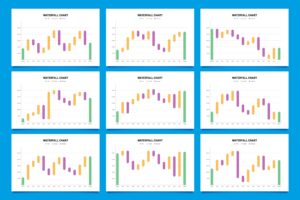Trading can be one of the most rewarding ways to grow wealth. This guide explains how to choose the right trading style for victory. Various styles—intraday, swing, positional, and investment—are described. Moreover, you’ll learn basic strategies and pointers for success.
Table of Contents
Understanding Trading Styles and Their Purpose
Learn fundamentals first before deciding on your ideal strategy. It involves buying and selling financial assets. It requires discipline and clear strategy. Different styles suit different goals and timeframes. For example, some traders prefer fast results. Others aim to hold longer to ride trends. So choosing the right style matters for success.
Trading Style 1 – Intraday Trading
Characteristics of Intraday Trading
Strategy Basics for Intraday Trading
Common strategies include scalping and momentum. Scalping targets very small price changes repeatedly. Momentum follows strong trending stocks. Indicators like RSI and MA help time your trade entries and exits. Always use tight stop losses to safeguard capital and reduce potential losses.
Trading Style 2 – Swing Trading
Characteristics of Swing Trading
Swing trade holds positions for days or weeks. This style aims for quick gains from short, sharp price moves. Best suited for people who lack time for constant chart monitoring. It balances speed with patience. This method skips short-term noise but follows reliable price trends.
Strategy Basics for Swing Trading
Swing decisions are often guided by visual price action formations. Trendlines help define momentum. Indicators such as MACD and stochastic RSI are useful. Put stop losses near major support or resistance zones for better risk control. Reward to risk ratios of 2:1 or better help ensure long term edge.
Also Read: Stock Market Basics
Trading Style 3 – Positional Trading
Characteristics of Positional Trading
Positional trade holds trades for weeks or months. Traders rely on fundamental and technical analysis. They follow bigger price moves and ignore minor corrections. This style aims at capturing major trends and profits. It suits those with patience and longer time horizons.
Strategy Basics for Positional Trading
Trend following systems often use moving average cross overs or breakouts. Traders may combine this with company fundamentals or economic data. Use trailing stops and wider limits to manage risk. Look for volume or momentum confirmation before entering a trade.
Also Read: Stock Exchange
Trading Style 4 – Investment Approach within Trading
Characteristics of Investment Style
Though known as investing, this approach falls under long term. Investors hold positions for years. They focus on company fundamentals and valuation. This style benefits from compounding and patience. It often avoids frequent fees and emotional trades.
Strategy Basics for Investment Style Trading
Investors analyze earnings, management quality, and industry trends. They rely on P/E, P/B, and yield ratios for decisions. Portfolio diversification across sectors reduces risk naturally. Investors often hold long-term unless major shifts in fundamentals occur.
Also Read: Famous Stock Market Terms
Why Choosing the Right Trading Style Matters
Select a trading method that fits your schedule and risk-taking capacity. Day trade needs constant focus and fast reactions. Swing works well for part-timers with medium overnight risk tolerance. Positional style is for traders who prefer fewer but larger moves. Long-term investing suits calm minds and future financial goals. Thus matching style to personality boosts discipline and performance.
Also Read: How to Open a New Trading Account
Comparing Trading Styles Briefly
| Style | Holding Period | Risk Level | Skills Needed | Time Commitment |
|---|
| Swing | Days to weeks | Moderate | Pattern reading, patience | Moderate |
| Positional | Weeks to months | Lower | Trend analysis, planning | Lower |
| Investment | Months to years | Low | Fundamental analysis, patience | Minimal |
Also Read: Bull Market Surge
Basic Strategy Tips Across Styles
Each trading style uses distinct tactics. However, common principles apply.
Risk Management in Trading
Always use stop loss. Never risk more than 1–2% per trade. Keep a 2:1 return-risk ratio for better profitability in trades. Avoid emotional decisions under pressure.
Technical Analysis
Clear signals help in entry and exit. Use trendlines, moving averages, RSI, MACD, stochastic indicators. Confirmation via volume increases success probability.
Emotional Discipline
Losses can stress you. Fear and greed affect decision making. Follow your plan and resist doing emotionally after losses. Journaling trades helps track psychology and performance.
Also Read: Bear Market Boom
How to Choose Your Style
First assess your personality and schedule. Next consider risk tolerance and capital. Younger traders might handle higher risk. Busy traders may benefit more from swing or positional strategies. Full time traders often prefer intraday. Long term capital builders may choose investment style within it. Aligning its methods with goals creates better consistency and discipline.
Also Read: Double Bottom
Practical Steps to Start
Step 1 – Identify Your Goal and Capital
Decide amount to invest and expected returns. Avoid overleverage.
Step 4 – Start Small in Live Trading
Begin with small trades under real conditions. Track results honestly.
Step 5 – Review and Refine Regularly
Evaluate trades monthly. Adapt rules and avoid repeating mistakes.
Also Read: How to Spot Double Top
Frequently Asked Questions (FAQ)
What is best style for beginners?
Beginners may find swing easier. It offers time to learn and reduces stress. However, positional or investment based also suits beginners with long term goals.
Can I mix styles in it?
How much capital do I need for it?
Is passive investing still trading?
How do I manage losses in trades?
Use strict stop loss and risk limits. Accept losses and review them unemotionally. Stay consistent with strategy.
Is it profitable long term?
Yes, with discipline, learning, and realistic goals. Profitable one requires patience and ongoing refinement.
Also Read: Gift Nifty
Conclusion: Triumph Through the Right Trading Style
Choosing the correct trading path improves your chances for sustained profitability. Align your trade style with your schedule, capital, and personal risk control. Every trade style, from quick to long-term, needs its own winning strategy. Focus on strong planning, risk control, and keeping your emotions under check. Traders thrive when their approach fits their daily routine. Wise trade leads to consistent profits and strengthens your confidence over time.
Also Read: Smart Money Concept







